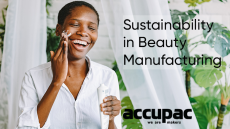Non-science used to market cosmetics
customers with impressive sounding claims that prove to be
scientifically incomprehensible on further inspection.
The link between advertising claims and product reality is often tenuous and cosmetics companies are viewed by some as the principle offenders prompting calls for greater controls on marketing practices in the EU.
Consumer watchdog magazine Which? has accused cosmetics firms including L'Oreal and P&G of employing pseudo science to lure customers to the checkout, according to press reports.
Which?
investigated L'Oreal and P&G products that promise, among other things, to 'refuel surface skin cells' and give the skin 'a dewy glow', by inviting manufacturers to substantiate their claims.
The answers were then referred to Sense About Science, an organisation that promotes good science, which analysed the information and judged their plausibility.
For example, posing as customers Which?
researchers asked L'Oreal's customer service about its moisturising ingredient hyaluronic acid.
The customer services representative incorrectly told the researcher that 'hyaluronic acid' was not an acid before explaining that the product containing the ingredient 'replumps, tautens and illuminates to give radiance to the skin.'
After analysing the transcripts, Sense About Science said there is evidence to justify the use of certain chemicals found in cosmetics.
However, the science charity said this is not true for products that claim to improve the signs of ageing or have an active effect on the skin.
The scientists were unable to see how ingredients such as pentapeptides, lipopeptides or omega 3 help to enhance the appearance of the skin.
Sense About Science spokesperson Aarathi Prasad said: "It's hard to gauge just how misleading the adverts are, but the problem is they don't present a full and frank explanation of the chemicals and how they work.
"For example, some face-cream products claim to stimulate the skin and they do, but only when used to treat people with arthritis.
"Some other products use nanogold, tiny particles which react with the skin to energise it.
But the only way nanogold can become reactive is with radiotherapy treatment in cancer therapy; it doesn't work if it's just in a pot of cream.
While many of the claims made by L'Oreal and P&G were judged by Which?
and Sense About Science to be marketing disguised as science, they do not flout EU regulations or the tough rules of the Advertising Standards Authority (ASA) in the UK.












